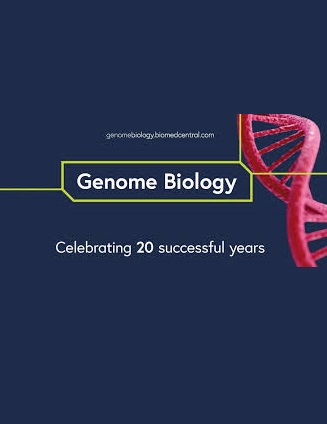Adenine base editors induce off-target structure variations in mouse embryos and primary human T cells
IF 10.1
1区 生物学
Q1 BIOTECHNOLOGY & APPLIED MICROBIOLOGY
引用次数: 0
Abstract
The safety of CRISPR-based gene editing methods is of the utmost priority in clinical applications. Previous studies have reported that Cas9 cleavage induced frequent aneuploidy in primary human T cells, but whether cleavage-mediated editing of base editors would generate off-target structure variations remains unknown. Here, we investigate the potential off-target structural variations associated with CRISPR/Cas9, ABE, and CBE editing in mouse embryos and primary human T cells by whole-genome sequencing and single-cell RNA-seq analyses. The results show that both Cas9 and ABE generate off-target structural variations (SVs) in mouse embryos, while CBE induces rare SVs. In addition, off-target large deletions are detected in 32.74% of primary human T cells transfected with Cas9 and 9.17% of cells transfected with ABE. Moreover, Cas9-induced aneuploid cells activate the P53 and apoptosis pathways, whereas ABE-associated aneuploid cells significantly upregulate cell cycle-related genes and are arrested in the G0 phase. A percentage of 16.59% and 4.29% aneuploid cells are still observable at 3 weeks post transfection of Cas9 or ABE. These off-target phenomena in ABE are universal as observed in other cell types such as B cells and Huh7. Furthermore, the off-target SVs are significantly reduced in cells treated with high-fidelity ABE (ABE-V106W). This study shows both CRISPR/Cas9 and ABE induce off-target SVs in mouse embryos and primary human T cells, raising an urgent need for the development of high-fidelity gene editing tools.腺嘌呤碱基编辑器在小鼠胚胎和原代人类 T 细胞中诱发脱靶结构变异
在临床应用中,基于 CRISPR 的基因编辑方法的安全性是重中之重。之前的研究报告称,Cas9的裂解会诱导原代人类T细胞频繁出现非整倍体,但裂解介导的碱基编辑是否会产生脱靶结构变异仍是未知数。在这里,我们通过全基因组测序和单细胞 RNA-seq 分析,研究了在小鼠胚胎和原代人类 T 细胞中与 CRISPR/Cas9、ABE 和 CBE 编辑相关的潜在脱靶结构变异。结果表明,Cas9 和 ABE 都会在小鼠胚胎中产生脱靶结构变异 (SV),而 CBE 则会诱导罕见的 SV。此外,32.74%转染了Cas9的原代人类T细胞和9.17%转染了ABE的细胞都检测到了脱靶大缺失。此外,Cas9 诱导的非整倍体细胞会激活 P53 和细胞凋亡通路,而 ABE 相关的非整倍体细胞会显著上调细胞周期相关基因,并停滞在 G0 期。在转染 Cas9 或 ABE 3 周后,仍可观察到 16.59% 和 4.29% 的非整倍体细胞。ABE 中的这些脱靶现象与在其他细胞类型(如 B 细胞和 Huh7)中观察到的一样普遍。此外,在使用高保真 ABE(ABE-V106W)处理的细胞中,脱靶 SV 明显减少。这项研究表明,CRISPR/Cas9 和 ABE 都会在小鼠胚胎和原代人类 T 细胞中诱导脱靶 SV,因此迫切需要开发高保真基因编辑工具。
本文章由计算机程序翻译,如有差异,请以英文原文为准。
求助全文
约1分钟内获得全文
求助全文
来源期刊

Genome Biology
Biochemistry, Genetics and Molecular Biology-Genetics
CiteScore
21.00
自引率
3.30%
发文量
241
审稿时长
2 months
期刊介绍:
Genome Biology stands as a premier platform for exceptional research across all domains of biology and biomedicine, explored through a genomic and post-genomic lens.
With an impressive impact factor of 12.3 (2022),* the journal secures its position as the 3rd-ranked research journal in the Genetics and Heredity category and the 2nd-ranked research journal in the Biotechnology and Applied Microbiology category by Thomson Reuters. Notably, Genome Biology holds the distinction of being the highest-ranked open-access journal in this category.
Our dedicated team of highly trained in-house Editors collaborates closely with our esteemed Editorial Board of international experts, ensuring the journal remains on the forefront of scientific advances and community standards. Regular engagement with researchers at conferences and institute visits underscores our commitment to staying abreast of the latest developments in the field.
 求助内容:
求助内容: 应助结果提醒方式:
应助结果提醒方式:


